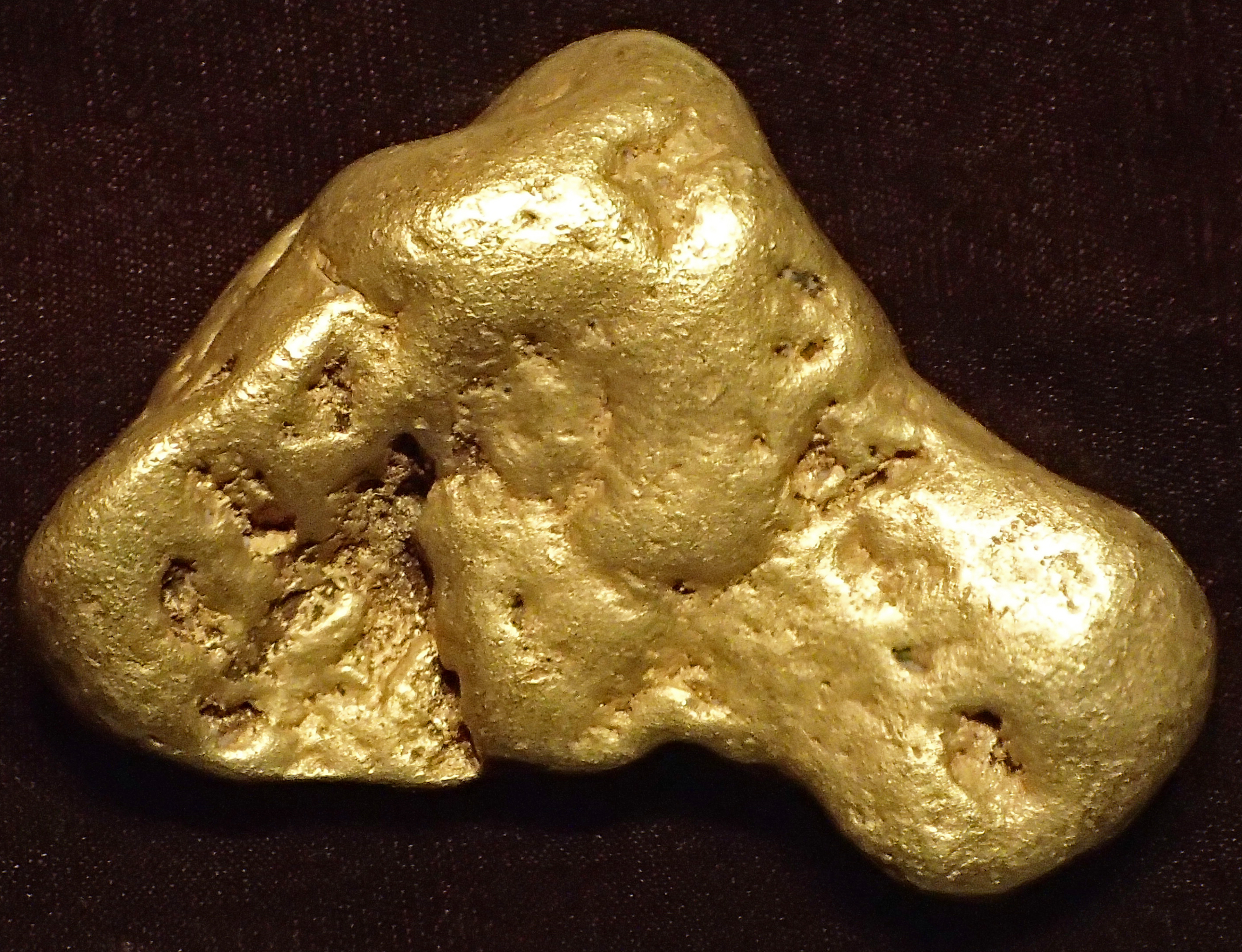- Global demand for gold is increasing while new discoveries of gold remain small
- Gold mining output in Australia is forecast to decrease by 50% in the next eight years
- Decline in global gold mining supply makes a price increase almost certain
 Gold nugget (placer gold) from Colorado, USA. Source: Commons.wikimedia.org
Gold nugget (placer gold) from Colorado, USA. Source: Commons.wikimedia.org
by Lawrence Thomas, Gold Telegraph
The demand for gold is increasing, yet new discoveries of the precious metal have not kept pace with the demand. Funds for exploration are historically high, $54.3 billion, up 60 percent over the past 18 years.
The increased spending, however, has not produced the equivalent in new gold discoveries. During the past decade, 41 discoveries have resulted in a mere 215.5 million ounces of the precious metal. Even counting recently discovered but unexplored mines, which may hold as-yet major discoveries, the total available amount of gold in these discoveries are not expected to surpass 363 million ounces over the next ten years.
Gold discoveries have followed a predictable pattern. 263 major gold discoveries have been made in the past 28 years, but half of those discoveries happened in the 1990s. This boom lasted until the turn of the century when the rate of discovery began to decline. Only 16 discoveries were reported from 2000 to 2002, which produced 108.3 ounces of gold. That amount was below the average finds of the 1990s. This decline has continued, with both new discoveries and the amount of gold mined decreasing steadily. By 2010, only 18.6 million ounces of gold was discovered, a severe drop from the 61.5 ounces found in 2009.
Old sectors are being depleted, while active exploration for new discoveries has been slow. The amount of available gold has not met expectation and remains far below the 2009 high.
The lack of new discoveries is not the result of funding. $54.3 billion has been allocated to exploration during the past decade. Part of the problem is that the time span between discovery and production is around 20 years. Unless significant new discoveries are made, the amount of available gold could decrease in the near future, raising the demand for the metal even further. Scarcity invariably results in higher prices, and the decline in global gold makes a price increase almost certain.
Continued gold exploration has become critical. In 2018, Colorado-based Newmont Mining Corp., one of the world largest gold explorers, has allocated $1.3 billion to expand its current projects, an increase of $300 million from the previous year.
Much of the available gold in Australia’s northern Goldfield has been depleted, and companies are drilling to unprecedented depths of 3 kilometers below the surface hoping for new discoveries as new finds are becoming rarer and more expensive to pursue.
According to Richard Schodde, managing director of MinEx, Australia gold mining output could decrease by 50 percent over the next eight years, with only four mines remaining open by 2057.
The need to drill deeper will make gold harder to find and more expensive to produce.
Listen on SoundCloud , Blubrry & iTunes. Watch on YouTube
News and Commentary
PRECIOUS-Gold eases on firmer dollar; but eyes first weekly gain in four (Reuters.com)
Gold steady as dollar hovers below 2018 peak (Reuters.com)
Bottom in place? Gold jumped to 10-day high (FXStreet.com)
U.K. House-Price Gauge Drops to 5 1/2-Year Low as London Slumps (Bloomberg.com)
London house prices predicted to keep falling (CityAM.com)
Source: US Funds
Gold Love Trade Looks Promising in India and China (USFunds.com)
The Wealthy Are Hoarding $10 Billion of Bitcoin in Bunkers (Bloomberg.com)
Gold Gets a Lifeline From a Surprising Source: Cheap Flights and Cars (Bloomberg.com)
Putin Wants to `Break’ With the Dollar But Dumps Euros Instead (Bloomberg.com)
The 1970s All Over Again? Part 1: The Middle East Explodes (GoldSeek.com)
Central Banks: The Great Experiment Has Failed (DailyReckoning.com)
Listen on SoundCloud , Blubrry & iTunes. Watch on YouTube below
Gold Prices (LBMA AM)
10 May: USD 1,314.80, GBP 969.27 & EUR 1,106.80 per ounce
09 May: USD 1,306.85, GBP 965.11 & EUR 1,102.07 per ounce
08 May: USD 1,310.05, GBP 969.44 & EUR 1,101.88 per ounce
04 May: USD 1,309.35, GBP 965.78 & EUR 1,094.09 per ounce
03 May: USD 1,313.30, GBP 966.19 & EUR 1,094.64 per ounce
02 May: USD 1,310.75, GBP 960.52 & EUR 1,091.99 per ounce
Silver Prices (LBMA)
10 May: USD 16.60, GBP 12.24 & EUR 13.97 per ounce
09 May: USD 16.44, GBP 12.12 & EUR 13.84 per ounce
08 May: USD 16.45, GBP 12.17 & EUR 13.85 per ounce
04 May: USD 16.42, GBP 12.10 & EUR 13.72 per ounce
03 May: USD 16.47, GBP 12.12 & EUR 13.74 per ounce
02 May: USD 16.35, GBP 11.98 & EUR 13.62 per ounce
Recent Market Updates
– Gold Mining Supply Globally Looks Set To Decline
– Gold Bullion Demand In Iran May Surge On Trump Sanctions
– “Money Is Gold – and Nothing Else”
– U.K. Home Prices Plunge 3.1% In April – Largest Monthly Drop Since Financial Crisis In 2011
– Weekly Gold Update – Gold In Dollars Lower Despite Poor US Jobs and Other Data
– Own Some Gold and Avoid Overvalued Assets
– Smart Money Diversifying Into Gold – One Billionaire Invests Half His Net Worth
– “Blood In The Streets” Of U.S. Gold Bullion Market As Sale Of Gold Coins Collapse
– Most Important Chart Of The Century For Investors?
– Gold Mining Shares Are Speculative Making Gold Bullion A Better Investment
– Gold Price Increasingly Influenced By Declining Dollar Rather Than Interest Rates
– Cash “Vanishes” From Bank Accounts In Ireland
The post Gold Mining Supply Looks Set To Decline appeared first on GoldCore Gold Bullion Dealer.
![]()



Leave A Comment
You must be logged in to post a comment.